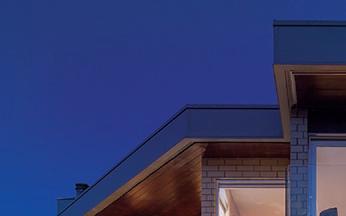
2 minute read
Living in the Future
The future of housing is an exciting topic with many advancements on the horizon. The way we live, work, and play is constantly evolving, and the same is true for how we design and build our homes. As technology continues to advance and urban populations grow, housing options are becoming more sophisticated and innovative. In this article, we will explore some of the most exciting advanced housing options in the future.
1
Smart Homes: Smart homes are already becoming more common, but in the future, they will be even more advanced. With the advent of artificial intelligence, homes will be able to anticipate their owner’s needs, adjust to their preferences, and provide personalized experiences. Imagine a home that can automatically adjust the temperature, lighting, and sound based on your mood, schedule, and habits. This is the future of smart homes.
2
3 ese homes o er numerous advantages over traditional stick-built homes, including cost-e ectiveness, time e ciency, and energy e ciency.
Modular Housing: Modular housing is an innovative building technique that allows for faster construction and more affordable homes. In the future, modular homes will become even more advanced, with designs that are both flexible and customizable. Homeowners will be able to create their dream home, choosing from a variety of pre-designed modules, and then assembling them on site.
Co-Living Spaces: Co-living spaces are shared living environments that are gaining popularity among urban millennials. In the future, coliving spaces will become more sophisticated and luxurious, with high-end amenities and services. These spaces will be designed to foster community and social interaction, offering a new way of living for those who value connection and collaboration.
4 Vertical Gardens: As urban populations grow, green spaces become more limited. In response, architects and builders are exploring ways to incorporate greenery into high-rise buildings. Vertical gardens are one way to accomplish this. These gardens are designed to grow vertically up the side of a building, providing a beautiful and sustainable living environment.
5 3D Printed Homes: 3D printing is revolutionizing the construction industry, allowing for faster and more affordable building methods. In the future, 3D printed homes will become more advanced and sophisticated, with designs that are both functional and beautiful. These homes will be able to be printed on-site, reducing construction time and minimizing waste.
6 Off-Grid Living: Off-grid living is a growing trend among those who value sustainability and selfsufficiency. In the future, off-grid homes will become even more advanced, with technologies that allow for greater energy efficiency, water conservation, and waste reduction. These homes will be designed to operate independently of the grid, providing a selfsustaining and environmentally friendly living environment.
In conclusion, the future of housing is full of exciting possibilities. From smart homes to modular housing, co-living spaces, vertical gardens, 3D printed homes, and off-grid living, there are many advanced housing options on the horizon. As technology continues to evolve, we can expect to see even more innovative designs and building techniques that will revolutionize the way we live. Whether you are looking for a sustainable, self-sufficient home or a luxurious co-living space, the future of housing has something for everyone.







INrecentyears, modular or factory-built homes have become an increasingly popular option for those looking to build a new home on the Sunshine Coast.
One of the most signi cant advantages of modular or factory-built homes is their cost-e ectiveness. Since these homes are built in a factory and assembled on-site, they require less labour and materials than traditional homes. is means that modular homes can o en be built at a much lower cost than stick-built homes. is is particularly appealing for those who are looking to build a home on a budget, or who are simply looking to get







